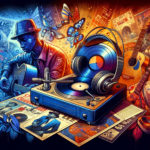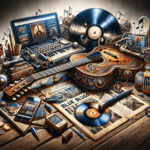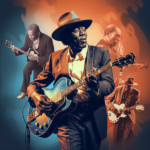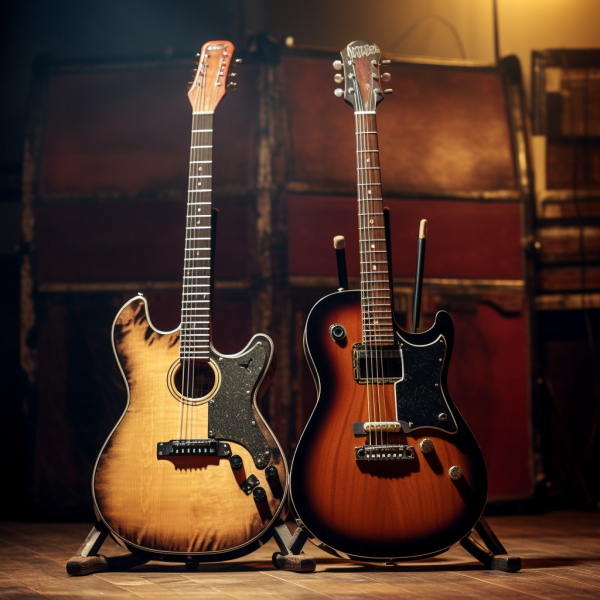The Birth of Electric Blues: The Impact of Amplification
Several music milestones have transformed genres. As instruments were electrified in the early 20th century, blues music changed. Electric blues, the outcome of this transformation, changed blues performance and led to rock ‘n’ roll. This article will explore electric blues’ evolution and how amplification shaped it.
The era of acoustic blues
Before diving into electric blues, we must comprehend its history. Early blues, known as acoustic blues, relied on unamplified instruments. Acoustic guitar, harmonica, and percussion dominated this expressive song.
Famous performers like Robert Johnson, Blind Lemon Jefferson, and Son House created these emotional acoustic blues. Their contributions enhanced the musical tapestry of their period and established the framework for the exciting transformation that followed.
The Need for Amplification
The 20th century saw a boom in blues-based musical creation and culture. However, this growing musical genre had to overcome the issue of expressing its deep melodies in the turbulent, sometimes chaotic, circumstances they played in.
Acoustic instruments, each with its own personality, were used to bring the blues to life. Early blues performers used the acoustic guitar, soulful harmonica, and other percussion devices. These instruments conveyed real emotion and connected the performer to their audience.
Musicians wanted to magnify their voices so that their talent could be heard across the room, even in a raucous crowd. Electric amplification was invented to bridge this difference and improve blues music in such demanding environments. This transformational event changed blues history and present music.
The Electric Guitar Emerges
The creation of the electric guitar was the first important development in electric blues. Innovators and musicians started experimenting with electrifying conventional hollow-body guitars in the late 1920s and early 1930s. The outcome was a musical instrument that could be connected to an amplifier, greatly enhancing its loudness and sustain.
George Beauchamp, who co-founded the Electro String Instrument Corporation in 1931 with Adolph Rickenbacker, was one of the innovators in this field. The “Rickenbacker ‘Frying Pan,'” one of their inventions, was the first commercially available electric guitar. This piece of equipment established the standard for all later electric guitars with its single-coil magnetic pickup.
The Amplifier’s Role
Although the electric guitar revolutionized music, it was just one component of the puzzle. Amplification was required to really electrify the blues. The Gibson Corporation unveiled the first guitar amplifier that was commercially successful in 1935. The EH-150 gave blues artists the loudness and tonal variety they were looking for thanks to its powerful amplifier and 15-inch speaker.
Blues guitarists could now produce loudness, distortion, and sustain using amplification that wasn’t possible with only acoustic instruments. This made it possible for more expressive playing techniques, such the well-known “bending” of the guitar strings that became synonymous with electric blues.
Impact of Amplification
Diverse Sound Palette
Blues instruments were amplified, which boosted their loudness and broadened their tone range. By adjusting amplifiers and their settings, musicians might experiment with distortion, feedback, and other effects. Through experimenting, the distinctive tones that characterize the electric blues genre were created.
Greater Accessibility
With the introduction of electric instruments and amplifiers, prospective artists could more easily get into the blues scene. Many artists found that purchasing an electric guitar and amplifier was more economical and practical than paying for the construction and upkeep of conventional acoustic instruments.
Performance Dynamics
Live performances might be more lively thanks to electric blues. The ability of musicians to regulate the loudness of their instruments led to explosive, loud climaxes that were followed by tense, silent intervals. With its rich emotional range, this dynamic range became a fundamental component of electric blues performances that captivated audiences.
Influence on Popular Music
Beyond blues and rock ‘n’ roll, electric blues had a significant impact on popular music. Electric blues was blended into the sounds of several musical genres, including jazz, R&B, and soul. Electric blues had a big impact on musicians like Jimi Hendrix and Eric Clapton, who pushed the limits of their own genres.
Recording Revolution
The recording business underwent a transformation with the advent of electric instruments and amplification. Acoustic blues recordings were unable to convey the unadulterated passion and intensity of live performances. This increased the appeal of blues albums and their influence on the world stage.
Cultural and Societal Impact
Electric blues evolved become a potent medium for social and cultural critique. By using their magnified voices in songs like “The Thrill Is Gone,” performers like B.B. King addressed topics of love, heartache, and social injustice. This allowed the genre to serve as both a form of entertainment and a forum for social commentary.
Blurring of Regional Styles
Regional differences in blues music have become more muddled because to electric blues. It made it possible for artists from many places, like the Mississippi Delta and Chicago, to work together and exchange their distinctive musical traditions. This stylistic intermingling enhanced the blues and gave rise to several subgenres of electric blues.
Modern Evolution
Modern-day electric blues is still evolving. In order to push the blues genre in novel and interesting ways, modern blues performers mix elements of rock, funk, and even hip-hop into their music. Festivals and concerts featuring the electric blues draw fans from all spheres of life, ensuring that the music is alive and well.
The Transition to Rock ‘n’ Roll
Electric blues not only changed the blues genre, but it also had a significant impact on the development of rock ‘n’ roll. Rock ‘n’ roll songs by musicians like Chuck Berry, who had a strong foundation in electric blues, often had bluesy overtones. The genre evolved to be known for the electric guitar’s blistering solos and catchy rhythms.
Conclusion
Amplification and instrument electrification enabled electric blues, a major musical development. It revitalized the blues and sparked the rock ‘n’ roll revolution. Electric guitars and amplifiers let blues musicians express their feelings and connect with fans worldwide. Electric blues is still a vibrant genre that honors its roots while pushing musical boundaries, showing how amplified music has shaped blues.









